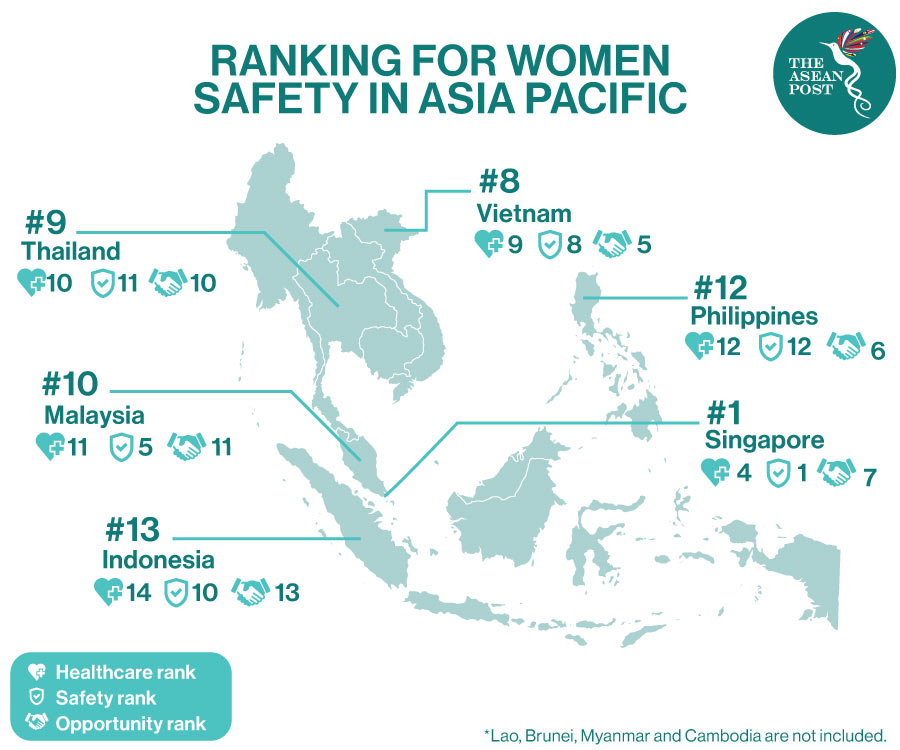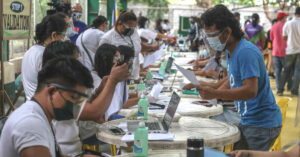
Clothing and appearance have a long, profound, and evocative history in the Philippines. It has been influenced by a multiplicity of factors which include but not limited to class, culture, era, values, tastes, gender hierarchies, religion, customs, ideologies, and the prevailing and evolving psychology of Filipinos. It is also said to be one of the contributing factors to ongoing confrontations related to issues such as sexuality.
Clothing and appearance are at the centre of the ongoing heated debate between two opposing camps of netizens using the hashtags #HijaAko (#Iamadaughter) and #AmaAKo (#Iamafather) for quite some time now on various social media platforms in the Philippines.
The feisty and highly spirited altercation between supporters of the hashtags #HijaAko (#Iamadaughter) and #AmaAKo (#Iamafather) is the result of a post on the official Facebook page of the Lucban Municipal Police Station in Quezon Province on 11 June 2020, reminding women to avoid wearing “short-short” and “revealing” clothes to avoid becoming possible targets and victims of sex-related crimes and offenses.
The exact social media post (which has since been taken down) reads: “Mahalin natin ang mga kababaihan at huwag nyo abusuhin ang kanilang kabaitan. (Let’s love women and not abuse their kindness.) “Kayo naman mga ghErlsz (girls), wag kayo magsuot ng pagkaikli-ikling damit at pag naman nabastos ay magsusumbong din sa amin. Isipin ‘nyo rin!” (You girls, on the other hand, should not wear excessively short clothes that when you’re harassed you come to us for help. Think about it too!).
The post gained a significant amount of attention. Overnight (on 12 June), it received around 8,500 reactions and was shared about 4,000 times. The post did not sit well with some netizens and celebrities who to some extent construed that the post was all about ‘victim-blaming’, hinting that girls are being raped and sexually harassed because of the way they dressed.
Among those who reacted passionately was Frankie Pangilinan, the daughter of Philippine showbiz “mega-star”, Sharon Cuneta Pangilinan and Senator Francis Pangilinan. Frankie blasted the controversial social media post in a tweet that was in caps saying: “STOP TEACHING GIRLS HOW TO DRESS?? TEACH PEOPLE NOT TO RAPE.”
Ben Tulfo, a media personality and host of BITAG LIVE, a popular television-radio show, which is also streamed on various social media platforms in the Philippines, called-out Frankie on Twitter, addressing Frankie as “hija” (daughter or young girl), and using his official hashtag, #AmaAko to say, “Hija, @kakiep83, a rapist or a juvenile sex offender’s desire to commit a crime will always be there. All they need is an opportunity when to commit the crime. Sexy ladies, careful with the way you dress up! You are inviting the beast.”
The exchange of tweets did not stop there. Frankie countered Tulfo in another Twitter post after changing her Twitter name to “hija” with the hashtag #HijaAko that trended on Twitter in the Philippines. Frankie’s reply to Tulfo was, “rape culture is real and a product of this precise line of thinking, where the behaviour is normalized (sic) particularly by men. The way anyone dresses should not be deemed as ‘opportunity’ to sexually assault them. Ever. Calling me ‘hija’ will not belittle my point.”
Ben Tulfo made a rejoinder to Frankie’s Twitter post by saying, “The wannabe smart aleck. Batang-bata ka pa para malaman mo ang mundo. Hija, iba mag-isip ang mga manyakis at mga rapist. Hindi natin sila matuturuan at mababago ang kanilang pagnanasa at pagiging kriminal. Ang tanging magagawa ay manamit ng tama. Huwag nating pukawin ang pagnanasa nila. Ito ang iyong magagawa. Bago natin sila baguhin, baguhin muna natin ang sarili’t pag-iisip natin. Gets mo hija? Tatay mo ang author ng Juvenile Law. (“You’re too young to comprehend the ways of the world. My child, sex maniacs, and rapists think differently. We can never teach or reform their criminal ways. The only way is to dress decently. We should not tempt them. This you can do. Before we change others we should change ourselves. Do you understand, hija? Your father was the author of Juvenile Law.”)

Hindsight And Perspective
To put things in perspective, if examined closely and objectively, the social media post of the Lucban Municipal Police Station and the reactions of Ben Tulfo do not allude to “victim-blaming”. That was not the intent at all. Rather they were reminders and words of caution for women to heed, out of concern and apprehension against possible sexual assaults. While the manner and choice of some words were patronising, nonetheless, if assessed objectively and carefully, the intention was not to belittle women or to make sexual violence the victims’ fault.
Likewise, Ben Tulfo was trying to tell Frankie and other young Filipino women to understand and recognize the reality that the world we live in is not a perfect one. It is a world where part of its realities is the existence of men, especially those high on drugs, who commit rape and even murder if presented with the opportunity. Temptation, after all, is an urge or desire to do something, especially something wrong or unwise. The provocation of lust and misdeeds, if left unbridled and uninhibited, could lead to danger.
Temptation according to Billy Sunday, the popular American baseball outfielder who became a celebrated and influential evangelist, “is the devil looking through a keyhole. Yielding is opening the door and letting him in.” To put it bluntly, Tulfo was giving a pragmatic and no-nonsense caveat that, as much as possible, women should not provoke temptation, should not succumb to unrealistic expectations that criminals like rapist can be told not to rape women because that is far from reality, and to be on the side of caution as much as possible for their safety.
On another note, one has to take into consideration that appearance and clothing are forms of vague and dispersed non-verbal communication that express messages about the wearer. The wearer for that matter cannot freely control the meaning and interpretation attached to her/his clothing, thus there will be interpretations that the wearer consciously and unconsciously did not intend to communicate. For example, people may surmise one’s sexual attitudes, intent, and behaviour based on clothing and appearances. Others may interpret clothing to be a form of consent. Why? Because, more often than not, people inaccurately and loosely deduce a woman’s sexual interest and attitudes based on her clothing.
Accordingly, there are particular types of clothing that are believed in general to be signs of, or interest in, certain types of sexual behaviour. Some of these female apparel items that are loosely and wrongly construed to be sexually provocative include see-through blouses, low-cut tops, tight jeans, short-short shorts/dresses, and behaviour such as not wearing a bra. When women are seen wearing such clothing items, people often used provocative terms such as sexy and seductive to describe the wearer. Hence, generally speaking, people tend to infer a woman’s sexual interests and attitudes based on her clothing more often than not. This happens and is a reality that women are confronted with.
Thus, clothing is indeed predisposed to and susceptible to inaccuracy and biased inferences. interpretations, and suppositions. Given this tendency and propensity, it is alarming and disturbing for women not to take caution in how they dress depending on the location, circumstances, occasion, and context for them not to be misinterpreted and misunderstood. One has to take note that no one can control the minds of other people, but a woman, to protect herself, can control her behaviour and actions toward others.
In a just and perfect world, bad things do not happen to good people. However, the world is not an utopia or dreamland, and women must bear such a reality in mind, and also recognise and accept that some risks and dangers need to be taken into consideration in the way they conduct themselves in public, even on a mundane and ordinary issue like clothing and appearance, so as not to be misunderstood, misinterpreted, and misjudged by others – especially notorious and criminally inclined and predisposed people.
Norms Of The Community
In retrospect, it is indeed a fact that through time, the way Filipino women dress has evolved significantly. From the “Filipiniana gowns,” worn by women during the Spanish colonial period, to the full-dress worn by women in the 1940s, to mini-skirts and ankle-length maxi dresses in the 70s. Today, even though a majority of Filipino women still heed and observe conventional decency in the way they dress, there are those who choose to somewhat emulate “daring and revealing” fashion trends that are heavily influenced by the West.
The predisposition and inclination among some women to wear provocative and seductive clothing items is seen as a form of expression, a form of art, and a way of showing to the world how comfortable they are with their bodies and that they can lay it bare for the world to see and probably admire. In the name of “women empowerment”, “women’s rights”, and “feminism”, there’s nothing wrong with such self- expression.
But in a highly conservative and staunchly religious country like the Philippines, where generally speaking, women are expected to be ostensibly modest, proper, and decent in their clothing, as a consequence of Catholic or Christian religious programming, such behaviour might offend the sense and sensibilities of many others. Why? Because such self-expression is not predominantly the norm of the community at large.
Therefore, women should dress sensibly and judiciously with consideration to others, who may not share the same beliefs, perspective, and sentiments. Doing so would mean respect and regard for others’ sense of values and principles. For instance, propriety should as much as possible be observed in such a way that one knows how to dress in a manner suitable to his or her age, status, circumstances, location, and to the occasion. Besides, one has to take cognizance of the fact that the wearing of risqué and provocative clothing, is not the norm in the Philippines but rather a concession.
Moreover, ideologies or concepts like “women empowerment, feminism, women’s rights, and even gender equality” should be prudently and judiciously interpreted, understood, and contextualised, keeping in mind communal sensibilities and the receptiveness of the wider society. This will ensure that the application and consumption of such ideologies and concepts bring more good than harm to people and society.
Source: The ASEAN Post
https://theaseanpost.com/article/philippines-hashtag-battle-hijaako-vs-amaako



